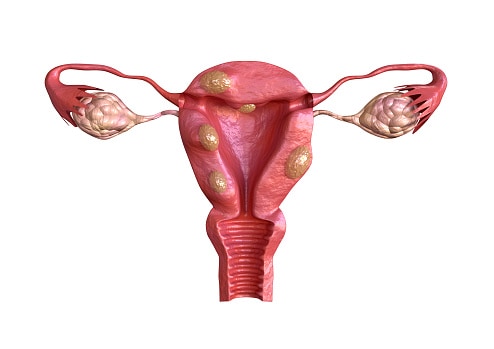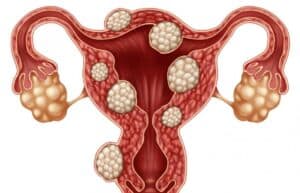Latest News
Mystery of Fibroids!

Do you know that 80% of all women develop fibroids till the age of 50, although, most of them remain asymptomatic? If fibroids are this much common, you must have some knowledge about this disease. So,
What are fibroids?
Fibroids are basically abnormal growth in the female uterus.
It is the most common occurring benign tumor of the female genital tract but it does not receive that much ‘respect’ probably because its clinical incidence is almost half of its histological incidence.
What are the types of fibroids?
It can be subserosal, intramural, or submucosal if it is present outside on the surface of the body; in the middle/muscular layer; or inside just below the mucosa, of the uterus, respectively.
Subserosal fibroids are termed as pedunculated if they grow with a stalk-like projection.
What are the causes of fibroids?
Causes of fibrosis are not that much clear, however, following fit the best;
- Mostly due to high levels of estrogen and progesterone in the body. (These hormones are involved in the regeneration of uterus lining after menstruation, and that’s why their excess production causes abnormal growths in the uterus.)
- Genetics. fibroids run in families
- Deficiency of micronutrients like vitamin D (as it inhibits cellular proliferation and extracellular matrix production in fibroids)
What puts you at risk of fibroids?
You may be at risk if you have,
- >30 years of age
- Positive family history
- Pregnancy
- African-American
- Vitamin D deficiency – etc.
What are the symptoms?
It depends…. If you have submucosal fibroids, you may experience profuse menstrual bleeding. On the other hand, if growths are small or developed after menopause, you may remain asymptomatic.
Symptoms may include,
- Heavy menstrual bleeding
- Prolonged menstrual phase
- Pelvic pain
- Menstrual cramps
- Pain during intercourse
- Frequent micturition (urination)
- Constipation
So, if you are in your 40s, and are having abnormally prolonged and profuse menstruation with pelvic pain, go see your doctor. You may have fibroids.

How are the fibroids diagnosed?
Gynecologists can diagnose fibroids on pelvic examination but they may need more test for confirmation like,
- Ultrasound
- Magnetic Resonance Imaging (MRI) of the pelvis – it gives a clearer picture of the condition of the uterus, as well as other pelvic organs like ovaries, etc.
How to treat fibroids?
Treatment options relate to the severity of symptoms but medications are typically the first line of therapy while invasive surgery is definitive but should be last resort.
- Medications
- For suppressing the symptoms of fibroids, you can take anti-inflammatory drugs (like ibuprofen), pain killers, etc.
- For shrinking fibroids, you can use Gonadotropin-Releasing Hormone (GnRH) agonist as well as the antagonist which acts by reducing estrogen/progesterone levels, and decreasing production of FSH/LH, respectively.
- Surgery
If medications are not giving good results or the fibroids are large, surgeons perform,
- Myomectomy – limited removal of the uterus, typically only the muscular layer
- Hysterectomy – complete removal of the uterus in which case, you will not be able to bear a child again.
- Minimally invasive: Uterine fibroid embolization
- A newer treatment option that is gaining traction and involves targeted blood flow reduction of fibroid leading to its shrinkage and ultimate expulsion from the body.
- This therapy is now available in an office setting as well in select geographies. Five Clinics, specializing in the treatment of Fibroids and Veins is one such center in central Ohio delivering this cutting edge treatment in an office. More information at www.fiveclinics.com
1)National Uterine Fibroids Foundation. (2010). Retrieved July 22, 2020, from http://nuff.org/health_statistics.htm
2)Okolo, S. (2008). Incidence, etiology, and epidemiology of uterine fibroids. Best practice & research Clinical obstetrics & gynecology, 22(4), 571-588.
3)Baird, D. D., Hill, M. C., Schectman, J. M., & Hollis, B. W. (2013). Vitamin D and risk of uterine fibroids. Epidemiology (Cambridge, Mass.), 24(3), 447.
Harper Harrison is a reporter for The Hear UP. Harper got an internship at the NPR and worked as a reporter and producer. harper has also worked as a reporter for the Medium. Harper covers health and science for The Hear UP.










